There’s something so fascinating about hands-on science experiments and projects. They make learning so meaningful and so much fun! These 5th grade science projects help kids explore biology, physics, chemistry, and a whole lot more. Try one at the 5th grade science fair, or use a few to liven up your lesson plans.
To make things even easier, we’ve rated every one of these 5th grade science projects based on difficulty and materials:
Difficulty:
- Easy: Low or no-prep experiments you can do pretty much anytime
- Medium: These take a little more setup or a longer time to complete
- Advanced: Experiments like these take a fairly big commitment of time or effort
Materials:
- Basic: Simple items you probably already have around the house
- Medium: Items that you might not already have but are easy to get your hands on
- Advanced: These require specialized or more expensive supplies to complete
Jump to:
- 5th Grade Science Fair Projects
- STEM Challenge 5th Grade Science Projects
- 5th Grade Matter and Energy Science Activities
- More 5th Grade Science Projects and Activities
5th Grade Science Fair Projects
Choosing a science fair project means finding a subject that really interests you and coming up with a unique question to answer. Use some of these 5th grade science fair project ideas to create a cool experiment all your own.
Stop soil erosion with plants

Difficulty: Medium / Materials: Medium
Soil erosion is a serious problem that can lead to natural disasters like landslides as well as causing problems for farmers, who lose valuable topsoil. Try this experiment to learn how plants help keep soil in place naturally, and change up the variables like soil composition or types of plants.
Learn more: Soil Erosion Experiment at Life Is a Garden
Blow square bubbles
Difficulty: Medium / Materials: Medium
Bubble science experiments are always a hit! In this one, kids construct a device to see if they can blow a square bubble instead of a round one.
Discover the delights of decomposition

Difficulty: Easy / Materials: Medium
This is a good chance to apply the scientific method and practice your observation skills, using only basic kitchen supplies. Ask the question: “Which food will rot (decompose) the fastest?” Have students hypothesize, observe, and then report their findings. Get a printable observation sheet at the link below.
Learn more: Food Decomposition at No Time for Flash Cards
Mix up some magic sand

Difficulty: Easy / Materials: Medium
What if you could make sand that was “afraid” of water? This 5th grade science experiment uses waterproofing spray to create you-gotta-see-it-to-believe-it hydrophobic sand.
Learn more: Hydrophobic Sand at Teaching Mama
Make your own bouncy balls

Difficulty: Easy / Materials: Medium
Students learn about polymers as they mix borax with cornstarch, glue, and water in this playful experiment. Experiment with size, shape, and ingredients to see which work best.
Learn more: DIY Bouncy Balls at Babble Dabble Do
Study water filtration
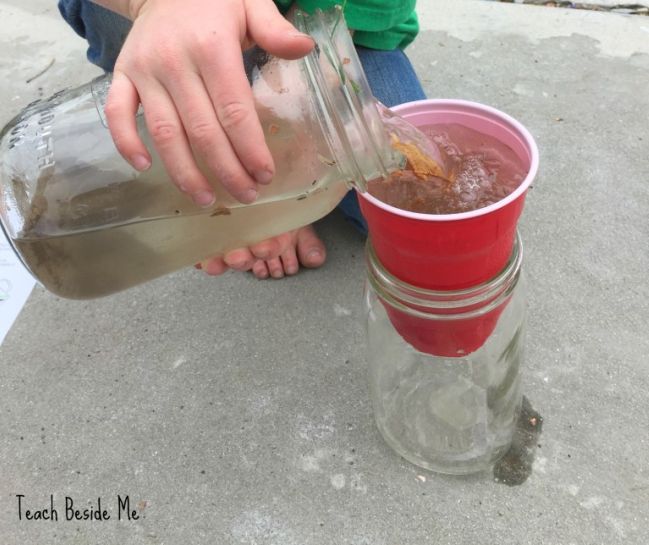
Difficulty: Easy / Materials: Basic
See the process of water purification firsthand. Layer coffee filters, sand, and gravel in the bottom of an empty cup punched with holes. Place the cup in an empty jar, pour in dirty water, and watch what happens. Mix up the variables, and you’ve got a cool 5th grade science fair project.
Learn more: Water Purification at Teach Beside Me
Find out if a dog’s mouth is cleaner than a human’s

Difficulty: Medium / Materials: Medium
Settle an age-old debate with this 5th grade science fair project. Collect saliva from both humans and canines with cotton swabs and place each sample in labeled petri dishes. Check the bacterial colonies in each and compare the results.
Learn more: Dog’s Mouth Project at Sciencing
Explore basic genetics

Difficulty: Easy / Materials: Basic
Send your students on a quest to find out more about their genes and inherited traits. The link below includes a printable chart they can use to learn about recessive and dominant genes.
Learn more: Inherited Traits at Education.com
Design a biosphere

Difficulty: Medium / Materials: Medium
This project really brings out kids’ creativity and helps them understand that everything in a biosphere is really part of one big whole. You’ll be overwhelmed by what they come up with!
Learn more: Biosphere Project at Laney Lee
Measure heat capacity of different liquids
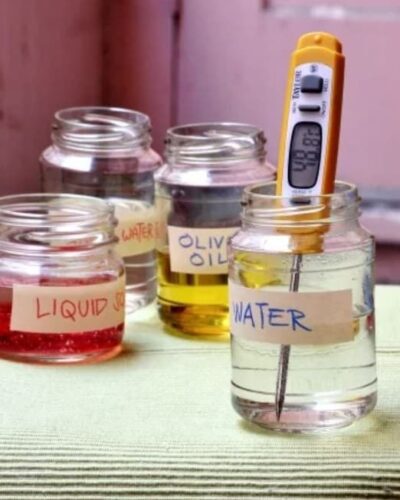
Difficulty: Easy / Materials: Medium
Your students will venture into the world of chemistry with this experiment that tests the heat capacity of different liquids, such as salt water, olive oil, and liquid soap, using a hot plate. They’ll incorporate math into their experiment when they plot their results!
Learn more: Heat Capacity at Education.com
STEM Challenge 5th Grade Science Projects
A good STEM challenge can spark a terrific science fair project too. These also make terrific classroom activities for 5th grade science students.
Assemble an automatic water fountain
Difficulty: Medium / Materials: Medium
Water fountains were around long before humans harnessed the power of electricity to make pumps. Learn how they worked with this STEM challenge science project for 5th grade.
Race down a LEGO zip line

Difficulty: Medium / Materials: Medium
Every kid loves LEGO bricks, so incorporate them into your 5th grade science activities! Challenge kids to design and build their own zip line. You can set the parameters, like distance and slope, then let students get to work.
Learn more: Zipline at 123 Homeschool 4 Me
Slow your roll
Difficulty: Medium / Materials: Medium
Ball-run challenges are always fun, but this one has a twist. Your goal is to build a run that gets the ball to the bottom taking the longest time possible! This requires kids to think about friction, slopes, and other creative features.
Fly clothespin airplanes

Difficulty: Medium / Materials: Medium
Put your 5th grade science students’ engineering skills to the test. Provide them with clothespins and wood craft sticks, and challenge them to build a realistic airplane. Bonus points if it can actually fly!
Learn more: Clothespin Airplane at STEAMsational
Spin a candle-powered pinwheel
Difficulty: Medium / Materials: Medium
Prove that hot air rises by using candles to spin a homemade pinwheel. Then experiment to see how the number of candles affects the spinning speed. (As always, make sure kids use fire under safe conditions.)
Set off a chain reaction
Difficulty: Medium / Materials: Medium
Learn about potential and kinetic energy when you try this cool 5th grade science experiment. All you need are wood craft sticks and a bit of patience.
Bounce on a trampoline

Difficulty: Medium / Materials: Medium
Kids love bouncing on trampolines, but can they build one themselves? Find out with this totally fun STEM challenge. Plus, check out more 5th grade STEM challenges here.
Learn more: Trampoline STEM Challenge at Student Savvy
Build a solar oven

Difficulty: Medium / Materials: Medium
Learn about the value of solar energy by building an oven that cooks food without electricity. Enjoy your tasty treats while discussing ways we can harness the energy of the sun and why alternative energy sources are important. (Love edible science projects? Get more ideas here.)
Learn more: DIY Solar Oven S’mores at Desert Chica
Launch your own bottle rocket

Difficulty: Medium / Materials: Medium
Blast off with a few supplies and a little help from the laws of motion. Encourage kids to design and decorate their rockets first and see which one can fly the highest!
Learn more: Bottle Rocket at Science Sparks
Peer through a cardboard microscope
Difficulty: Medium / Materials: Medium
Microscopes can be pricey, so make your own at home! This is the kind of 5th grade science fair project that will really wow the judges.
Build a snack machine

Difficulty: Medium / Materials: Medium
Incorporate everything students learn about simple machines into one project when you challenge them to build a snack machine! Using basic supplies, they’ll need to design and construct a machine that delivers snacks from one location to another. (Get more candy experiments here.)
Learn more: Snack Machine Challenge at Left Brain Craft Brain
Use rubber bands to sound out acoustics

Difficulty: Easy / Materials: Basic
Explore the ways that sound waves are affected by what’s around them using a simple rubber band “guitar.” (Your students will absolutely love playing with these!)
Learn more: Rubber Band Guitar at Science Sparks
Assemble Archimedes’ screw
Difficulty: Medium / Materials: Basic
It’s amazing how often science looks like magic—until you understand the principles behind it. Such is the case with the simple pump known as Archimedes’ screw. It’s easy to build your own and makes for a cool 5th grade science fair project.
Recycle newspaper into an engineering challenge

Difficulty: Easy / Materials: Basic
It’s amazing how a stack of newspapers can spark such creative engineering. Challenge students to build a tower, support a book, or even build a chair using only newspaper and tape.
Learn more: Newspaper Tower at STEM Activities for Kids
Construct a sturdy bridge
Difficulty: Medium / Materials: Medium
To design a safe bridge that meets the needs of the community, engineers must understand the capabilities and limitations of the bridge. This project is great for budding 5th grade engineers as they simulate constructing a bridge that serves its purpose and keeps community members safe.
5th Grade Matter and Energy Science Activities
Every 5th grade science curriculum is different, but many include some common concepts. Learn about the states of matter, matter and its interactions, and energy science with these neat 5th grade activities.
Model the states of matter
Difficulty: Medium / Materials: Medium
Create simple models to show the arrangement of molecules in solids, liquids, and gasses. Ping-Pong balls are perfect for this. (Find more states of matter activities here.)
Drink root beer floats

Difficulty: Easy / Materials: Medium
This is our favorite way to learn about the various states of matter! Treat time becomes a learning lesson with this 5th grade science matter activity.
Learn more: Teaching Matter With Root Beer Floats at Learning Lab Resources
Fill a bubble with dry ice vapor
Difficulty: Medium / Materials: Medium
Discover the science of sublimation by turning dry ice from a solid directly into a gas. Then play around with surface tension as the resulting vapor fills a giant bubble. This one is so cool to see in action!
Discover density with hot and cold water

Difficulty: Medium / Materials: Basic
There are a lot of cool science experiments you can do with density. This one is extremely simple, involving only hot and cold water and food coloring.
Learn more: Hot and Cold Water Density at STEAMsational
Learn to layer liquids
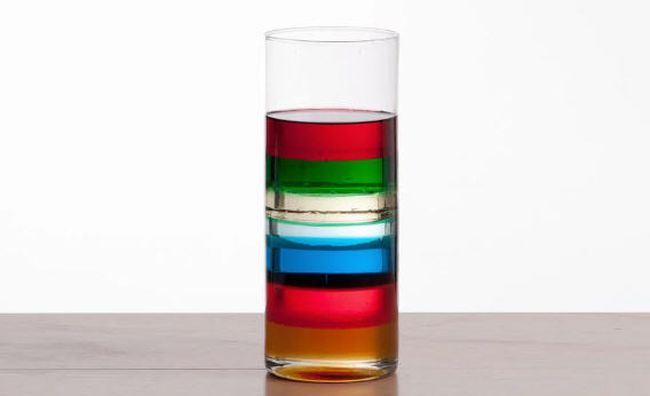
Difficulty: Medium / Materials: Basic
This density demo is a little more complicated than other science projects, but the effects are spectacular. Slowly layer liquids like honey, dish soap, water, and rubbing alcohol in a glass. Your 5th grade science students will be amazed when the liquids float one on top of the other like magic (except it is really science).
Learn more: Liquid Density at Wonder How To
Light(ning) it up indoors
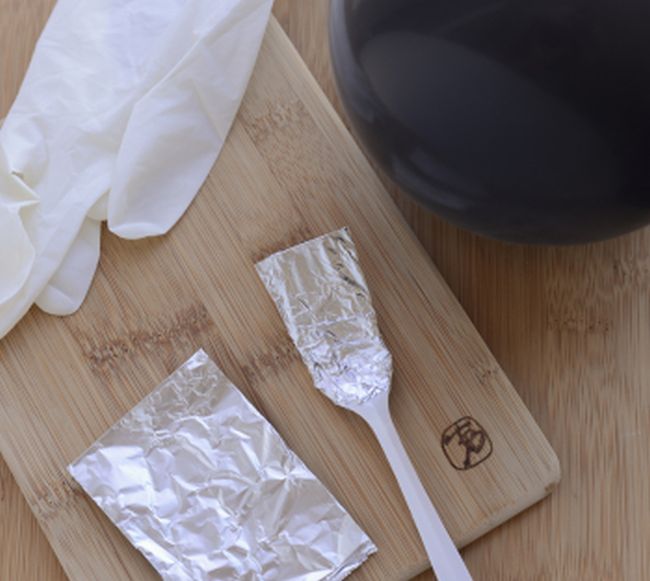
Difficulty: Easy / Materials: Basic
On a cool, low-humidity day, use a foil-covered fork and a balloon to create a “lightning storm” in your classroom. Turn down the lights to give students a better view of the static electricity you’re creating.
Learn more: Indoor Lightning at Education.com
Create convection currents

Difficulty: Easy / Materials: Basic
This easy experiment uses hot and cold liquids and some food coloring to explore the thermal and kinetic energy that creates convection currents. Take things a step further and research how convection currents work in large bodies of water, like oceans.
Learn more: Heat Convection at Education.com
Sink or swim with soda cans

Difficulty: Easy / Materials: Basic
Here’s another easy density experiment. Place unopened cans of regular and diet soda into a bin of water to see which float and which sink. The differences are due to the use of sugar and artificial sweeteners.
Learn more: Sink or Swim at Cool Science Experiments HQ
Find out if water conducts electricity

Difficulty: Medium / Materials: Medium
We always tell kids to get out of the water as a storm approaches. This 5th grade science project helps explain why. (Conductivity vs. non-conductivity is one of the properties of matter too.)
Learn more: Electricity and Water at Rookie Parenting
Blow up a balloon—without blowing

Difficulty: Easy / Materials: Medium
This is the classic science experiment that helps you teach the reactions between acids and bases, plus what happens when you mix different substances together. Fill a bottle with vinegar and a balloon with baking soda. Fit the balloon over the top, shake the baking soda down into the vinegar, and watch the balloon inflate.
Learn more: Balloon Reaction at All for the Boys
More 5th Grade Science Projects and Activities
Use these hands-on science activities to spice up your lesson plans or as enrichment projects for science-loving kids to try at home.
Erupt a salt dough volcano

Difficulty: Medium / Materials: Medium
Need a 5th grade science fair project? Go with a classic: the volcano! This one’s made from salt dough, which is easy to work with and inexpensive to make.
Learn more: Salt Dough Volcano at Teach Beside Me
Peel an orange to understand plate tectonics

Difficulty: Medium / Materials: Medium
If students are learning earth science, use an orange to make plate tectonics easier to understand. Peel it, then reassemble it and look at the pieces as plates floating on the Earth’s mantle.
Learn more: Orange Tectonics at Science Sparks
Discover the strength of eggshells
Difficulty: Easy / Materials: Basic
We think of eggshells as very fragile, but their shape makes them surprisingly strong. Try this experiment to learn why arches are such a useful shape in architecture.
Demonstrate the “magic” leakproof bag

Difficulty: Easy / Materials: Basic
So simple and so amazing! All you need is a zip-top plastic bag, sharp pencils, and some water to blow your students’ minds. Once they’re suitably impressed, teach them how the “trick” works by explaining the chemistry of polymers.
Learn more: Magic Leakproof Bag at Paging Fun Mums
Explore the science of glow sticks

Difficulty: Easy / Materials: Medium
Glow sticks are always a big hit with kids, so they’ll have a terrific time learning about the chemical reactions that make glow sticks work.
Learn more: Glow Stick Science Experiment at A Dab of Glue Will Do
Grow crystal snowflakes

Difficulty: Medium / Materials: Medium
Kids love crystal projects, and this one results in winter decorations for your classroom. Your students will learn about supersaturated solutions and crystallization. (See more winter science activities here.)
Learn more: Crystal Snowflakes at Little Bins for Little Hands
Escape from quicksand

Difficulty: Easy / Materials: Basic
Dive deep into the science of quicksand and learn about saturation and friction along the way. You’ll create a small “quicksand” pool from cornstarch and water, then experiment to find out the best ways to escape.
Learn more: Quicksand Experiment at Education.com
Watch the heart beat with marshmallows

Difficulty: Easy / Materials: Medium
If you can get your 5th grade science class to quiet down enough for this one, they might be able to see a marshmallow jump with each beat of their hearts!
Learn more: Heartbeat Marshmallows at Growing Grade by Grade
Make a foil bug walk on water

Difficulty: Easy / Materials: Basic
Surface tension allows water striders to dance across the surface of the water. Re-create this scientific phenomenon with little “bugs” made of aluminum foil.
Learn more: Foil Water Strider at The Homeschool Scientist
Find out how bile breaks down fat

Difficulty: Easy / Materials: Basic
Learning about the digestive system? This 5th grade science demo explores the purpose of the bile produced by the liver, which breaks down fat.
Learn more: Bile Experiment at Simple Southern
Construct a homemade lava lamp

Difficulty: Easy / Materials: Basic
This 1970s trend is back—as a 5th grade science project! Learn about acids and bases while putting together a totally groovy lava lamp.
Learn more: Homemade Lava Lamp at Education.com
Investigate osmosis with gummy bears
Difficulty: Easy / Materials: Medium
Gummy bears are not only tasty, but they can also help teach your 5th graders about the concepts of osmosis and equilibrium as well as solvents and solute.
Replicate a sunset
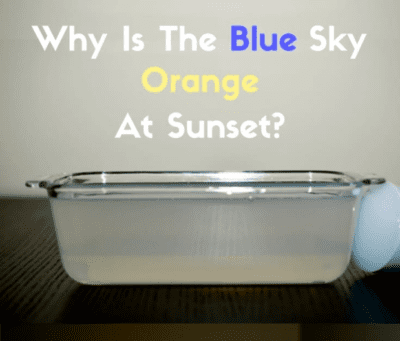
Difficulty: Easy / Materials: Medium
With just water, milk powder, a flashlight, and a glass dish, your 5th graders will investigate why the sky appears to change colors as the sun sets.
Learn more: Sunset Sky at Rookie Parenting
Defy gravity with floating water
Difficulty: Easy / Materials: Basic
This one might cause a bit of a mess, but it’s only water, and it’s all in the name of your students discovering air pressure. All you’ll need is a cup, index card, water, and crossed fingers that your classroom doesn’t become a puddle!
Model constellations

Difficulty: Easy / Materials: Medium
Space delights students of all ages. The mystery and mystique is intriguing, and creating a constellation out of pipe cleaners is a fun STEM activity to explore the night sky.
Learn more: Constellations Model at STEAM Powered Family
Continue the STEM learning with these 5th Grade Math Games for Teaching Fractions, Decimals, and More.
Plus, sign up for our newsletters to get all the latest teaching tips and ideas straight to your inbox.


